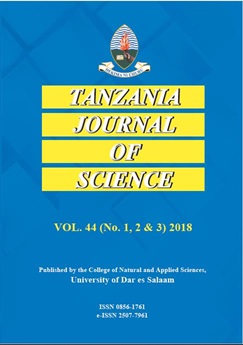Comparison of centrifugation and solid phase extraction (SPE) methods of sample preparations in determination of residues of drugs of abuse in urine
Abstract
Detection of drugs of abuse in urine samples depends on their composition, absorption, distribution, physical and chemical properties, concentrations, elimination properties, and the techniques employed. This study compared the performance of centrifugation and solid phase extraction (SPE) methods in the determination of levels of drugs of abuse and their metabolites in urine samples collected from drug abusers. Analysis was performed using liquid chromatography-tandem mass spectrometry (LC-MS-MS). Calibration was done using both internal and external standards. The recovery values were generally greater in centrifugation method than in SPE method, but the recoveries in both methods were within an acceptable range. Linearity values (R2) ranged from 0.9789 to 0.9944 with an average of 0.99. The LOD and LOQ values were satisfactory. The concentrations of 6-monoacetylmorphine (6-MAM), morphine and cocaine were up to 3.37, 4.21 and 0.03 μg/mL, respectively in samples prepared by centrifugation method, while in samples prepared by SPE method were up to 6.67, 6.66 and 0.13 μg/mL, respectively. The mean concentrations and detection frequencies of 6-MAM and morphine were higher in samples prepared by centrifugation method than those of SPE method. Cocaine had the same mean concentrations and detection frequencies in samples prepared by both methods. There were no significant differences in the concentrations of the drugs of abuse between the samples prepared by centrifugation and SPE methods, although the levels of the drugs in the samples prepared by centrifugation method were slightly greater than those prepared by SPE method.
Keywords: Centrifugation; Solid Phase Extraction; Cocaine; Heroin; Urine; LC-MS-MS


